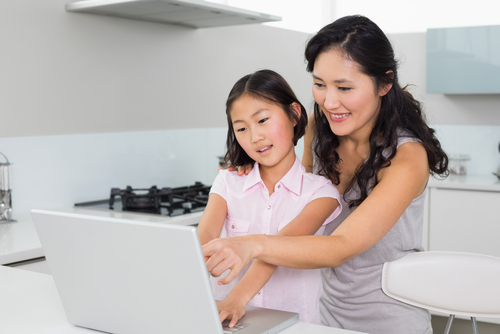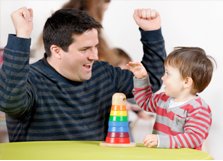 For children, learning doesn’t begin at school. It begins the moment they’re born. In fact, if parents dont’t foster a positive learning environment at home, a child’s ability to learn and excel at school or anywhere else outside the home are compromised. But what exactly does a “positive learning environment” for children mean?
For children, learning doesn’t begin at school. It begins the moment they’re born. In fact, if parents dont’t foster a positive learning environment at home, a child’s ability to learn and excel at school or anywhere else outside the home are compromised. But what exactly does a “positive learning environment” for children mean?
The Passion for Learning
A positive learning environment for children is one where all adults constantly display a love of learning. You can’t expect your kids to learn to like a new school lesson or a life skill, if you don’t, either. As an adult, you must never lose the willingness and curiousity to learn new things; as a parent, you should “infect” your child with the same enthusiasm.
Start exposing your child to this enthusiasm early on. Even when your child is only a toddler or infant, play music, read stories at night, or point out new things. Teach the child to read simple words at an early age. Once older, he or she can then read a storybook out to you every night. You can also watch educational programs and the news on TV together, or visit a museum, zoo, historical or natural landmark. Encourage your child to ask questions. If you don’t know the answers to those questions, both you and your child can even have fun investigating for the answers.
Above all, strive to make these true bonding experiences between you and your child. These are the sort of activities your child can later recall (as an adult) as the love-filled moments in their childhood.
Make It Play-Time
 A child should feel that learning can as fun as playing. This is especially true for young children. If you have a toddler, adopt a more intuitive, unstructured, “creative play.” Creative play for children means allowing their imagination to dictate what sort of game you’ll be playing. You’re not there to dictate; you are there to play along. It can be classic role-playing (such as playing house, playing grown-up, and dressing up). Or you can both build something out of the child’s imagination, using building blocks, paints or crayons, modeling clay, or whatever else you might have.
A child should feel that learning can as fun as playing. This is especially true for young children. If you have a toddler, adopt a more intuitive, unstructured, “creative play.” Creative play for children means allowing their imagination to dictate what sort of game you’ll be playing. You’re not there to dictate; you are there to play along. It can be classic role-playing (such as playing house, playing grown-up, and dressing up). Or you can both build something out of the child’s imagination, using building blocks, paints or crayons, modeling clay, or whatever else you might have.
Remember that creative play should involve a lot of physical activity (i.e., running, jumping, throwing stuff, etc.) Creative play is a multi-sensory, multi-intelligence activity, which develops not just your child’s IQ, but his or her emotional intelligence and physical fitness.
Making Time
But what can you do, if you don’t always have enough time to devote to pure creative play or educational explorations with your child? The answer: multi-task by integrating these into your everyday activities.
Your child has a fertile imagination, and so should you. Mundane tasks like doing the groceries, walking the dog, or cleaning house will still have aspects to them that you can use to nurture a passion for learning in your child. Talk to one another and tell stories about anything under the sun, especially topics that your child might want to bring up—even while you’re cleaning the car, for instance.
Proper Nutrition
Don’t forget to give your child the proper nutrients for mental development! This means foods rich in omega-3 fatty acids, complex carbohydrates, vitamins, and essential minerals; for example: seafoods, nuts, whole grains, eggs, dairy products, and vegetables.






